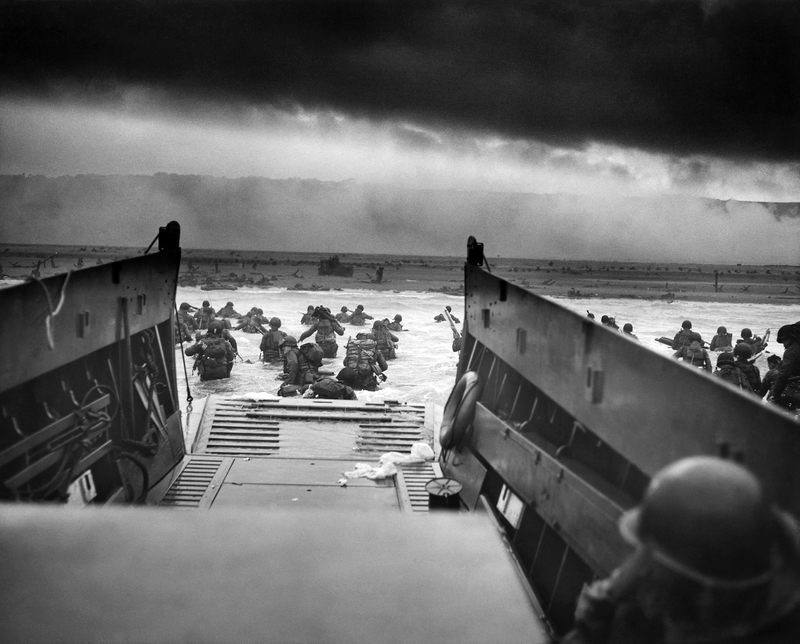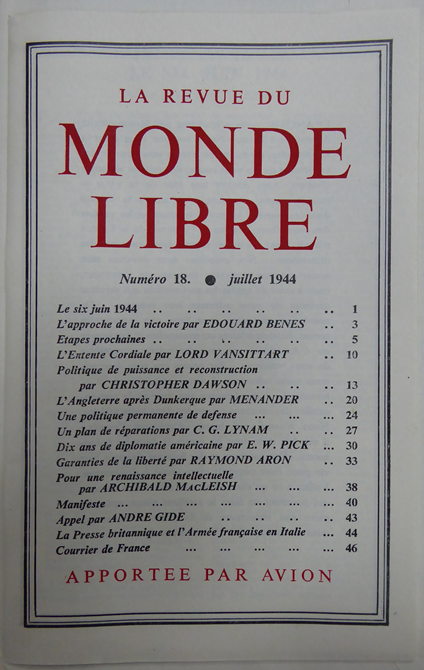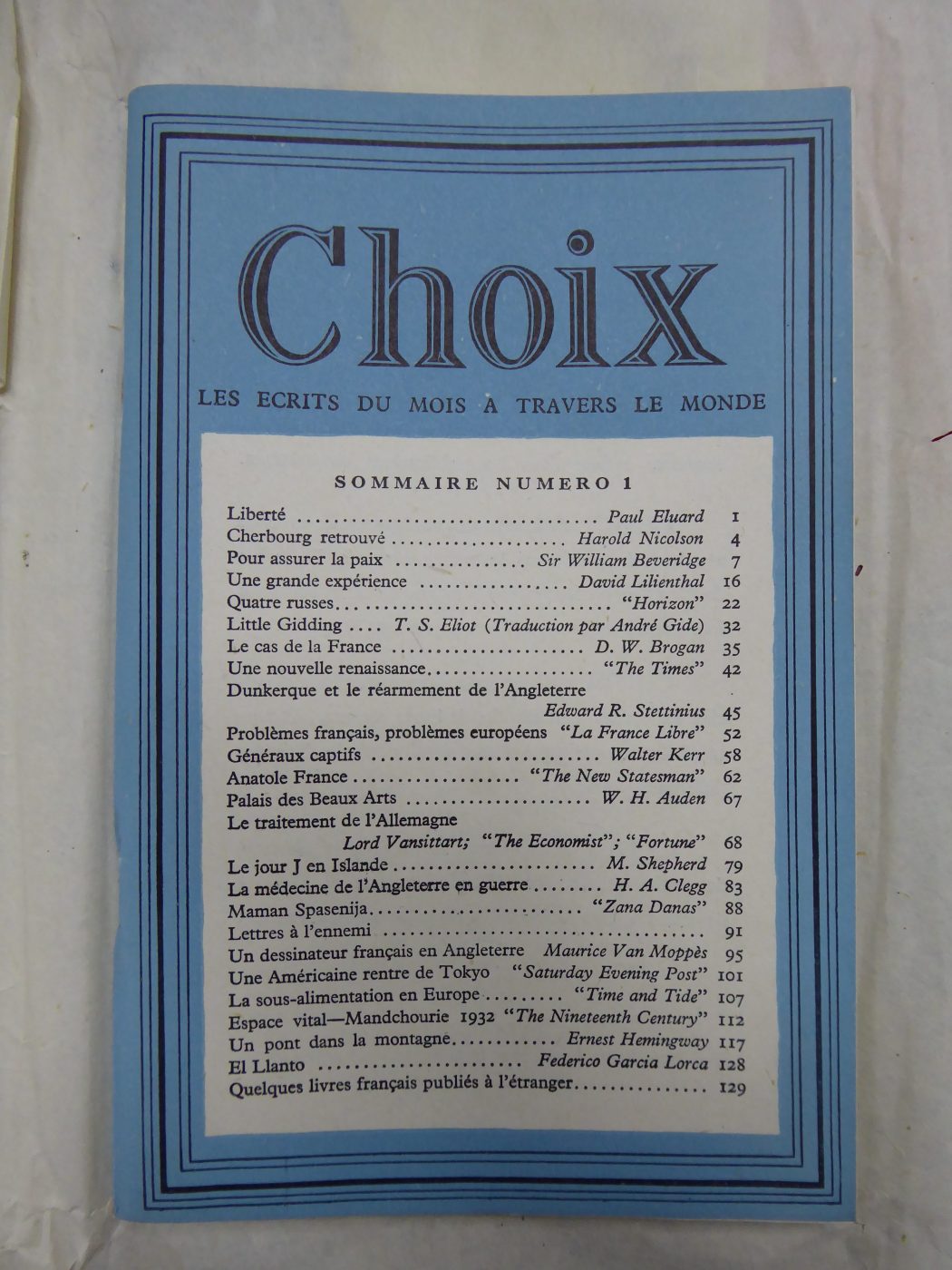‘L’Entente Cordiale’: D-Day and the literary magazine
Documents of the month: FO 898/521 / FO 898/522
As many recollections aired this week have testified, the D-Day landings – which took place exactly seventy-five years ago today – required an enormously technically sophisticated military operation. Aside from the Mulberry Harbours and the Pluto Pipeline however, it is worth remembering that the Allied conquest of Northern France was accompanied and supported by a colossal propaganda campaign – many documents in the PWE archive refer to plans for D-Day and post D-Day propaganda. The archive also contains several examples of leaflets and other printed propaganda for distribution in France after liberation.

British and US propagandists worked closely together on the campaign, which was coordinated by the Supreme Headquarters of the Allied Expeditionary Force (SHAEF) Psychological Warfare Division. According to Caroline Reed over nine million leaflets were dropped on France on 6-7 June 1944 – together with radio broadcasts these brought news of the landings to the occupied and the occupiers, and advised French civilians to leave towns and cities and seek safety in the countryside.
Aside from this operational propaganda however, the PWE and their US counterparts at the Office of War Information (OWI) were working busily on a supplementary programme of cultural publications, including a cluster of little magazines and literary digests intended to foster cultural connections between the Allies and the French.
The archive contains several copies of La Revue du Monde Libre, for example – a little magazine measuring just 11 x 14 cm, which was produced in 1943-44. This carried literary works, essays and reviews by a range of prominent British and French writers including T.S. Eliot, E.M. Forster, André Gide, Harold Nicolson, and Stephen Spender.

This edition from April 1943 features ‘Un Seule Pensée’, a poem by Paul Eluard, and an essay by Rebecca West on the attitude of the Nazis towards women. The cover features the legend ‘Apportée par la R.A.F.’ – ‘Brought by the RAF’.
By the time of D-Day the magazine had increased in size and the quality of the paper had improved – as mentioned in a previous post, the use of high quality materials, colour and design in printed propaganda was an important means of demonstrating that the Allies were well-resourced at a time of extreme scarcity. Here is La Revue du Monde Libre from July 1944:

This begins with an article reprinted from the British magazine The Economist describing the events of 6 June 1944 – it also features an essay by the Germanophobic diplomat, writer and propagandist Lord Vansittart entitled ‘L’Entente Cordiale’, clearly aimed at fostering friendly Anglo-French relations, and an essay by the historian Christopher Dawson promoting international collaboration to aid post-war reconstruction – this was originally published in the Dublin Review.
So successful was La Revue du Monde Libre that PWE and OWI moved to produce a series of like-minded review digests for European countries which had been liberated. The digest Choix was produced for France from 1944-45 – the cover of the first issue shows how serious-minded a publication it was, featuring a translation of T.S. Eliot’s ‘Little Gidding’ by André Gide and other contributions by W.H. Auden, Ernest Hemingway and Federico Garcia Lorca.

As the official historian of the PWE David Garnett observed, these publications aimed to dispel an intellectual and cultural black out resulting from the occupation.[1] Harnessing the writings of some of the most prominent figures in mid-century modernism, La Revue du Monde Libre and Choix also appear to be designed to foster enthusiasm in France for British and American high culture – in this respect these publications perhaps prepared the ground for the later weaponisation of the literary magazine during the Cold War.[2]
Images by kind permission of The National Archives
Notes
[1] David Garnett, The Secret History of PWE: The Political Warfare Executive 1939-1945, (London: St Ermin’s Press, 2002), p. 185.
[2] The scandal surrounding covert CIA funding of the literary magazine Encounter (initially edited by Stephen Spender) is addressed by Frances Stonor Saunders in Who Paid the Piper? The CIA and the Cultural Cold War (London: Granta Books, 2000).
